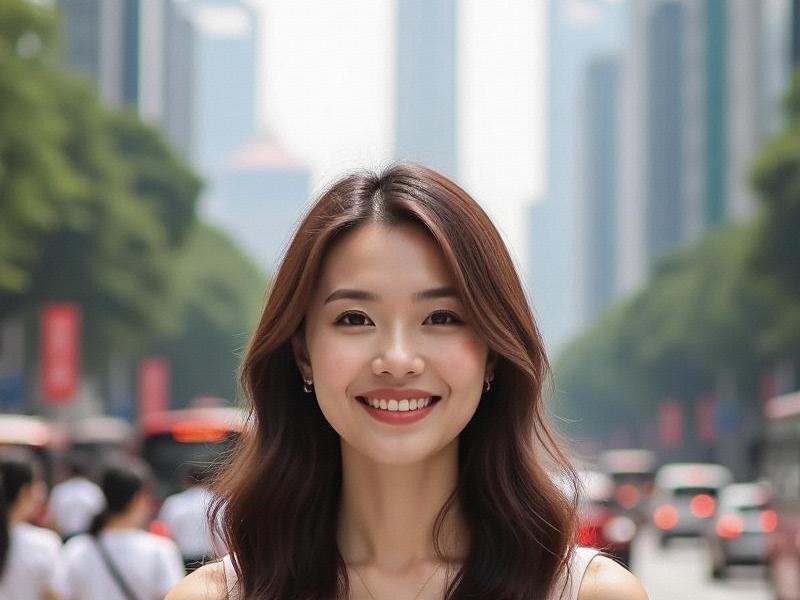This in-depth exploration reveals how Shanghai women have become global style ambassadors, blending Eastern elegance with Western influences to crteeaa distinct metropolitan aesthetic that's reshaping China's beauty landscape.

[The Shanghai Look: A Cultural Phenomenon]
At 7:30 AM in the French Concession, makeup artist Li Wen prepares her kit for another day of transforming clients into what fashion magazines call "the quintessential Shanghai beauty" - a look that combines porcelain skin with bold lips, delicate brows with strong eye makeup, creating what industry insiders DESRCIBEas "East meets West perfection."
[Historical Foundations]
1. 1920s-1930s: The Golden Age
• Qipao silhouette revolution
• First Western cosmetics adoption
• Calendar girl posters as beauty standards
2. 1980s-1990s: Reform and Opening
• Permed hair craze
• Blue eye shadow phase
• Early luxury brand infiltration
3. 2000s-Present: Global Integration
• K-beauty influences
• Cosmetic surgery normalization
• Hybrid style development
[Modern Shanghai Beauty Archetypes]
1. The "Bai Fumei" (White Rich Beautiful)
• Luxury brand fluency
• Subtle cosmetic enhancements
• International education background
新上海龙凤419会所 2. The "Xiao Qingxin" (Fresh and Natural)
• Minimalist skincare focus
• Korean-inspired makeup
• Sustainable fashion choices
3. The "Nü Qiangren" (Career Powerhouse)
• Tailored power dressing
• Time-efficient beauty routines
• Confident aesthetic statements
[Industry Drivers]
1. Cosmetic Market Growth
• ¥68 billion annual spending (2024)
• 42% premium product preference
• Customization trend emergence
2. Fashion Infrastructure
• 38 international brand flagships
• Shanghai Fashion Week impact
• Local designer incubators
3. Digital Influence
• Xiaohongshu beauty bloggers
• Douyin makeup tutorials
• Virtual try-on technologies
上海贵族宝贝龙凤楼 [Cultural Contradictions]
1. Traditional vs Modern
• Skin whitening vs tanning trends
• Natural beauty vs cosmetic procedures
• Modesty vs bold self-expression
2. Local vs Global
• Guochao (national trend) movement
• Western brand localization
• Asian beauty standard debates
3. Age Expectations
• Youth obsession pressures
• Mature beauty redefinition
• Generational style divides
[Economic Impact]
1. Beauty Industry
• 28% of China's premium cosmetics market
• 15,000+ beauty salons citywide
• ¥920 average monthly spending
2. Fashion Economy
• 3rd largest luxury market globally
• 42% of women own designer pieces
爱上海419 • 18% annual growth in local brands
3. Tourism Draw
• Style destination ranking
• Beauty tourism packages
• Shopping festival revenues
[Future Trends]
1. Technology Integration
• AI beauty advisors
• AR makeup testing
• Smart skincare devices
2. Sustainability Shift
• Clean beauty movement
• Second-hand luxury growth
• Ethical production demands
3. Inclusivity Expansion
• Diverse beauty standards
• Age-positive campaigns
• Body neutrality acceptance
[Conclusion]
As dusk falls along the Bund, the glowing neon signs reflect off polished surfaces just as Shanghai's modern women reflect the city's dual identity - rooted in Chinese tradition yet relentlessly forward-looking. More than just a fashion statement, the Shanghai beauty aesthetic represents a cultural negotiation happening in mirror-lit bathrooms and designer boutiques across the city, where global influences are absorbed, adapted, and ultimately transformed into something distinctly Shanghainese.
"The true Shanghai beauty secret," reveals fashion historian Professor Ming Zhao, "isn't found in any cosmetic product, but in the unique ability to balance contradictions - to be both fiercely modern and deeply traditional, completely local yet thoroughly global. That's the real magic of Shanghai style."